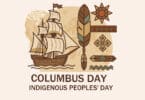Since Valentine’s Day is in February, it is a good time to look into how our ancestors celebrated the day of love, and how their traditions can help us find out more about them, their lives, and who they were as people. One way that our more recent ancestors celebrated Valentine’s Day that is similar to what we do today was to give Valentine’s Day cards to each other. This tradition began sometime in the early to mid-1700s in England and eventually made its way over to the United States. Here is what you need to know about our ancestors and Valentine’s Day cards.
The first Valentine’s Day cards on record were from at least the mid-1700s, and possibly earlier, in Great Britain, and they were hand-made. Some families still have these early cards in their possession among their heirlooms, and the handmade, hand-written cards provide deep insight into who their ancestors were as people, and how they expressed love to different people in their lives, from family to lovers.
Printed, mass-produced Valentine’s Day cards began being exchanged in 1849, which means those handmade cards were the tradition for about a century. There is a good chance your family may have some of those cards being kept by another family genealogist or an elderly relative in a box of mementos. If your family has lived in the same place for a long time, handmade Valentine’s Day cards may have been donated to the local historical society or archives, which makes it a good idea to check there. You never know what genealogical treasures you may find.
When printed cards began to be available, their availability, type, and location were often published in local newspapers. You can search old newspaper archives online or in person where your ancestors lived to discover the types of Valentine’s Day cards they may have purchased for their loved ones. This is especially helpful in piecing together your family history and story if you do not have any handmade Valentine’s Day cards from the early days of the tradition preserved in your family or available to you.
An example of the type of advertisement you might find from the early days of printed cards comes from an 1856 Vermont newspaper, which announces a local store carries a large variety of Valentine’s Day cards which are “rich, rare, and beautiful,” and that it also carries a huge amount of different “comic Valentines.” This shows you that even in the 1800s, our ancestors could be both tender and sentimental with their Valentine’s Day cards, or they might choose comic, humorous ones if they wanted to keep things less formal (maybe for a friend or a lover who they knew enjoyed a good joke).
An interesting thing about old newspaper advertisements for Valentine’s Day cards is that there were usually no images of them in early newspapers, except in the rare occasion they were hand-drawn. This is because photography was in its early days, and it would have cost the newspaper too much to photograph a card. It wouldn’t have made economic sense for a small mercantile store. Instead, merchants had to advertise their Valentine’s Day cards by using words to describe the types of cards they had available, and those words had to be enticing enough to convince people to come into the store and browse the selection in person. This usually involved a pitch convincing customers why a particular store was the best one for purchasing their Valentine’s Day cards, instead of going to another store in town that may have also sold them.
An 1882 newspaper advertisement from New Hampshire states that “Mr. Judd, the bookseller, has the best selected stock of Valentines. Therefore, his establishment is the proper place to look for your supplies in this line.”
That is a clear description of why shoppers needed to buy their Valentine’s Day cards from Mr. Judd’s place!
Another interesting thing about early Valentine’s Day cards was that they were not always given out of love or admiration. Sometimes, our ancestors used Valentine’s Day as an opportunity to tell people what they really thought of them, in card form. An 1860 newspaper article from New York actually complains about “indecent” cards being sent to respectable young ladies. These cards were apparently so indecent by the standards of the time that the paper actually called for the abolition of the tradition of sending Valentine’s Day cards.
Other newspapers of the time have similar articles complaining about how rude and vulgar Valentines had become. They can be found with simple online searches about Valentine’s Day cards on sites with old newspaper databases. These “rude and vulgar” cards were known in those days as “vinegar Valentines.” These were mean-spirited Valentine’s Day cards that people sent to those whom they wanted to make fun of in some way. Usually, the cards mocked a person’s marital status (whether married or not), the way they operated their business, or personal quirks or weaknesses, such as if someone was an alcoholic. This tradition of vinegar Valentines began in the mid-1800s and actually continued to the 1970s, before fading out of popularity.
In the early days of sending printed Valentine’s Day cards, the holiday was even more stressful on the post office than Christmas, with its influx of Christmas cards. The post office was so overworked by the sheer volume of Valentine’s Day cards being sent that some retailers offered an express delivery service of their own for those who waited until the last minute to purchase and send a card. Enterprising retailers knew the popularity of the holiday among the card-sending set, and would usually have their own sort of “pony express” or “mail carriage” service leaving their store several times a day to deliver cards for their customers in the days leading up to Valentine’s Day.
Clearly, Valentine’s Day was an important holiday for sending cards to our ancestors in the past two to two-and-a-half centuries. Looking for old Valentine’s Day cards your ancestors may have sent or received, or reading in old newspapers about Valentine’s Day cards and/or card delivery services available in your ancestors’ towns and cities is an excellent way to add more information about them, their lives, and who they were as people to your family tree.






